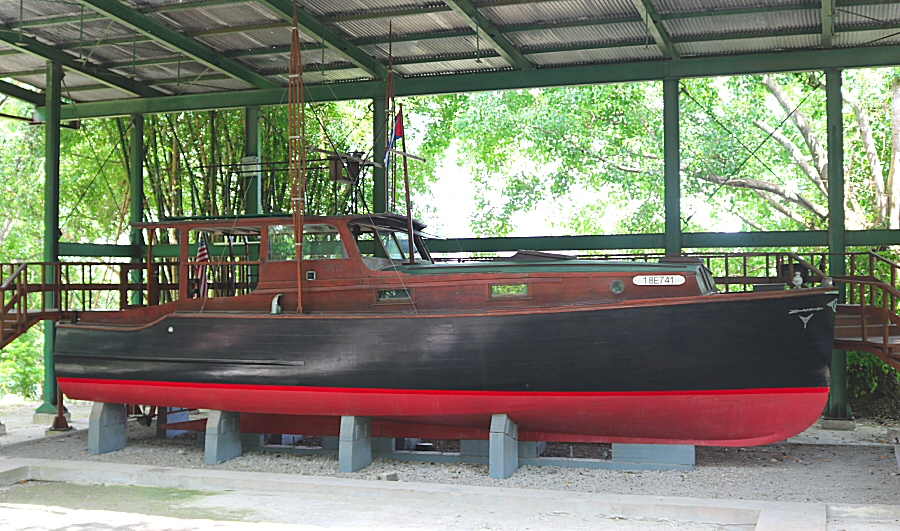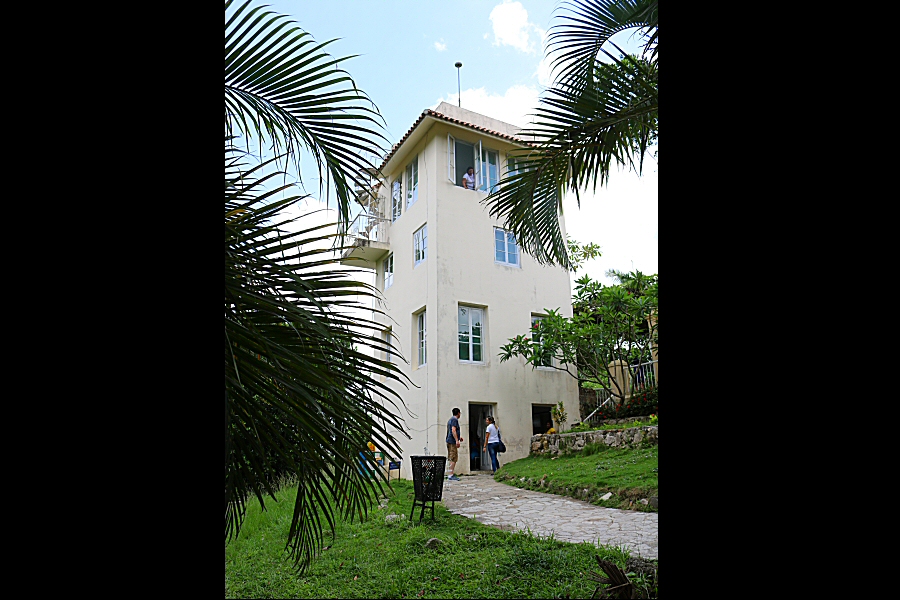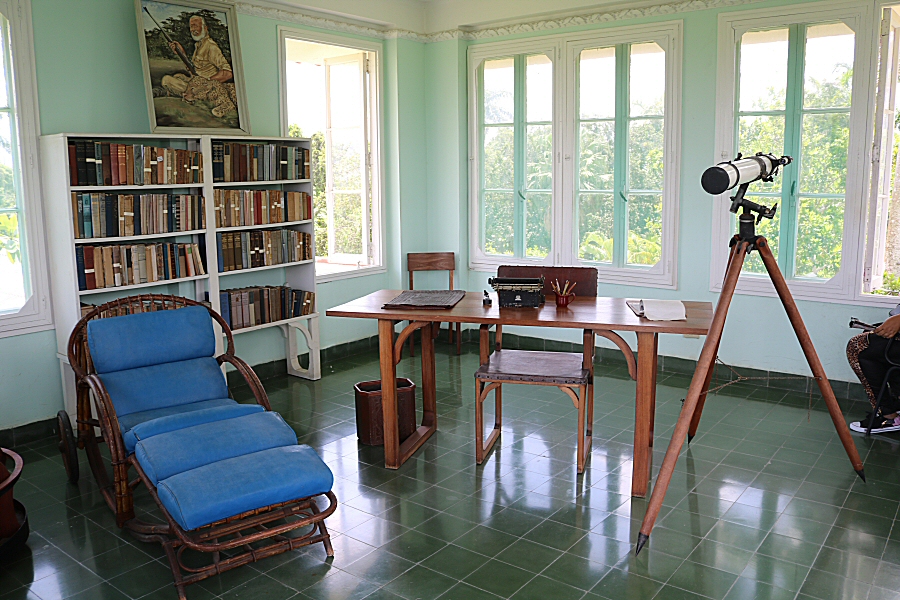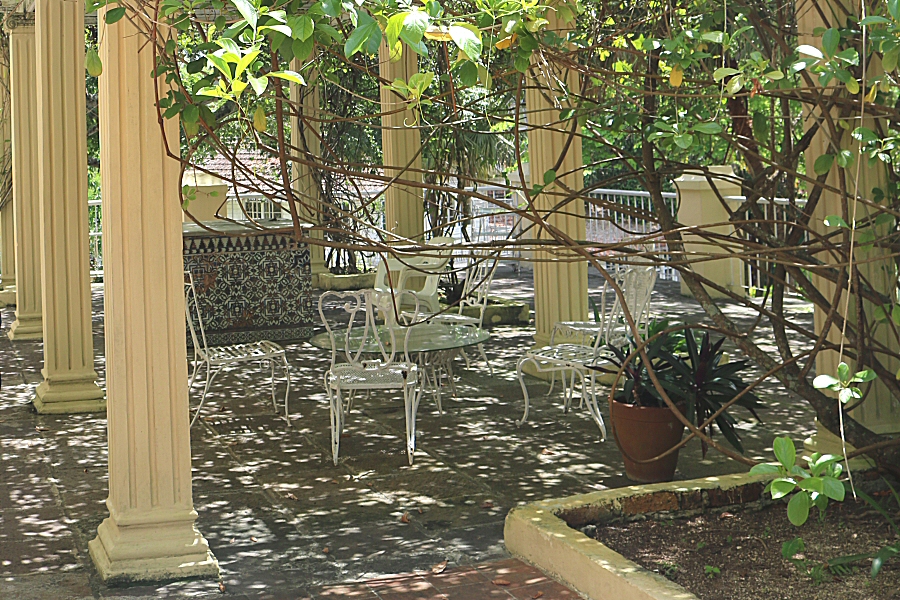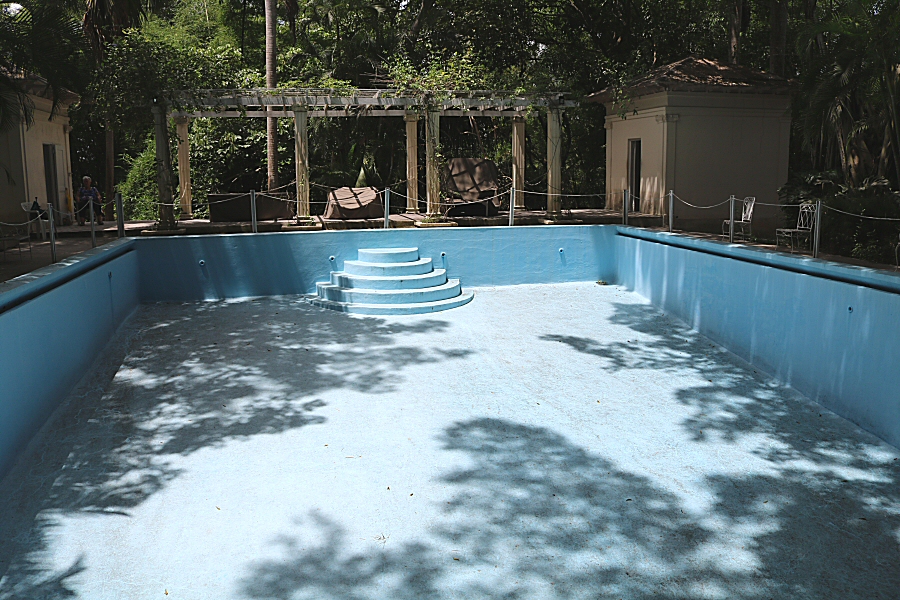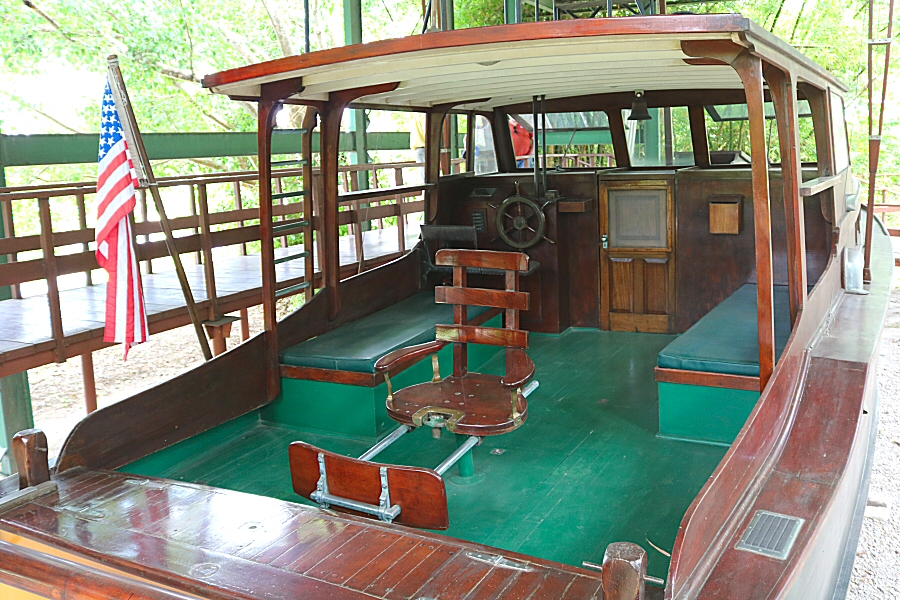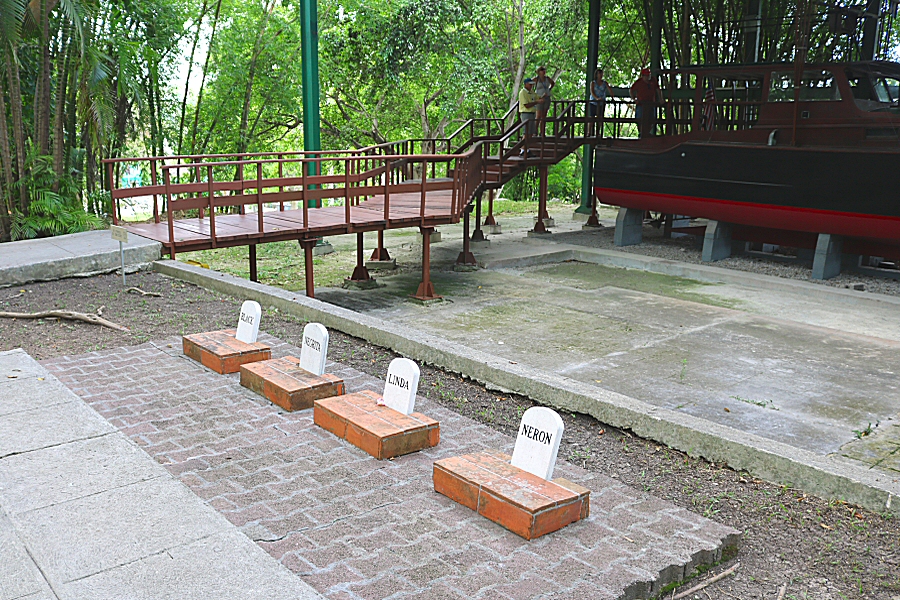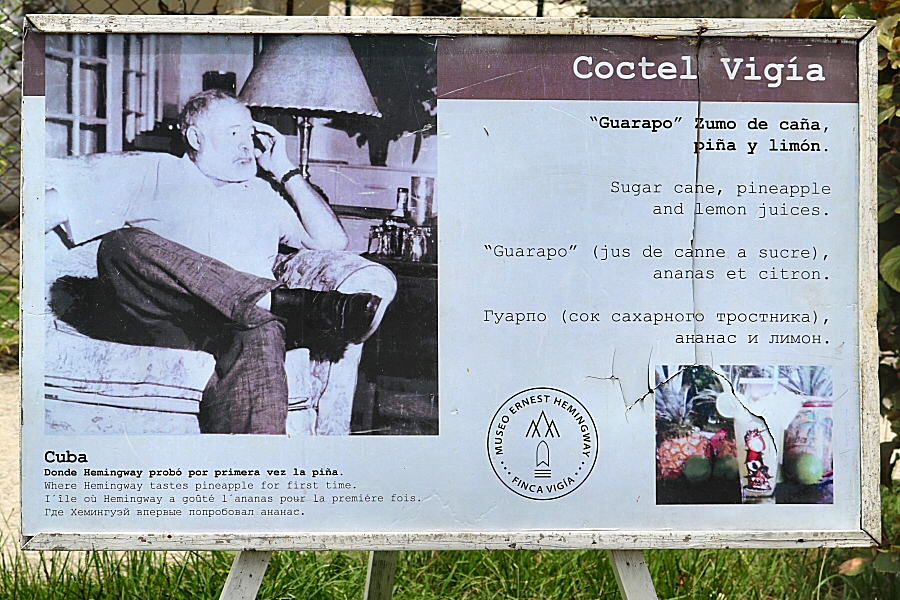
The tower, on the left side of the back of the house, was intended as the continuation of the house. It was the idea of Mary Hemingway to create a new comfortable and silent place where Hemingway would work. It was built in 1946. The three-storey tower has a height of about 12 meters. In the course of time, the first floor became the shelter of the fifty cats of the farm. Currently, this floor is used as temporary exhibition area of plastic works, related with Hemingway. The second floor was used as a warehouse where travel trunks, fishing and hunting instruments were stored, among other objects. The third floor was furnished as a place where Hemingway would write. However, he didn’t write there; rather he used the telescope in the room to watch the beautiful view around and rest on the wicker chair with the foam mattress. A painting on the bookcase represents him holding a gun during one of his safaris, smiling triumphantly.
The bungalow next to the house was decorated by Mary Hemingway to the taste of young people, as this place was intended for their children, when they would visit the farm. The bungalow hosted also the Italian countess Adriana Ivanchich, the Renata character in his novel Across the River and Into the Tree (published in 1950).
The farm had a tennis court and a swimming pool. Ernest Hemingway personally needed the swimming pool, as the heat and humidity in the area was beyond the limits of tolerance sometimes. He was used to swim about 700-800 meters every day. He needed the swimming pool also because he was hosting many personalities in his house. It is said that Ava Gardner swam naked in this pool.
Currently, the tennis court doesn’t exist, as the fishing boat of Hemingway, the so-called Pilar yacht, stands on its area. Pilar is the nickname of his third wife Pauline, and also the name of the woman leader of the partisan group in his novel For Whom the Bell Tolls. Hemingway was a sea lover, but fishing had a special place in his life, like his safaris. Several of Hemingway's novels were influenced by time that he spent on the boat. Hemingway won many fishing tournaments with his Pilar, even establishing a world record by fishing seven marlin in one day in 1938. Hemingway meticulously took notes about weather and fish caught that would serve as a guide for his friends. These logs are on the display at the John F. Kennedy Presidential Library and Museum in Boston. The Ernest Hemingway International Fishing Tournament has been held in Cuba since 1950. The writer had won the first three of them.
The boat was constructed in the Coney Island yard of the Wheeler company that had also built the Granma yacht, on the order of Hemingway in 1934. The hull is made of American black oak. It could reach a speed of 8 knot (about 15 km/h).
It is said that Hemingway was inspired by Gregorio Fuentes, the last captain of the boat, in creating the character Santiago in his novel The Old Man and the Sea. Fuentes had rescued Hemingway from distress in 1926. After the death of Hemingway Fuentes was given the supervision of yacht Pilar that was anchored in the port of Cojimar until it was transported to Finca Vigía.
In the garden,
you will find the bust of Hemingway, sculpted by the Swedish
sculptor Johan Falkman. Hemingway’s face is mounted on a
rock shipped to Cuba from Sweden. The bust was unveiled on
the occasion of the celebration of the 500th anniversary of
the foundation of the city of Havana on the day November 16,
2019. As you will remember, Hemingway could not travel to
Sweden for the Nobel Prize ceremony. Therefore, the Swedish
envoy Carl-Herbert Borgenstierna had delivered the prize in
Finca Vigía.
